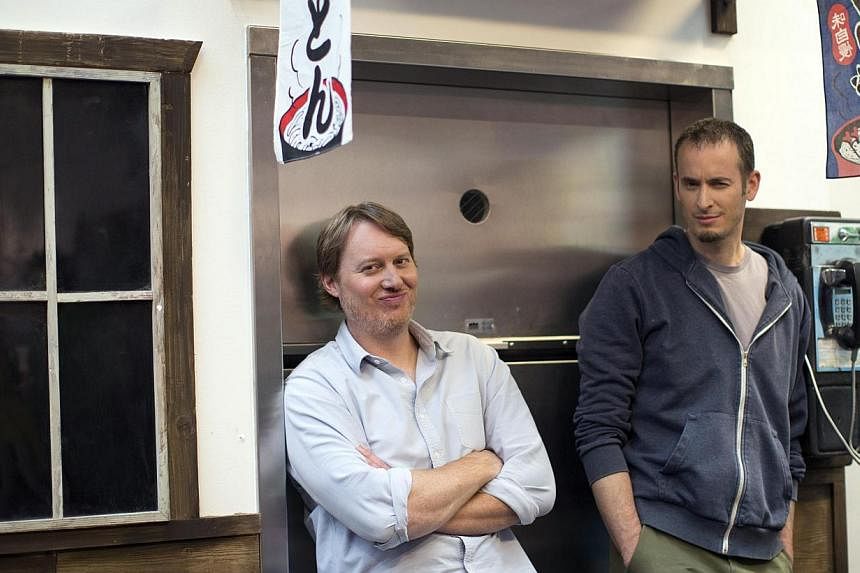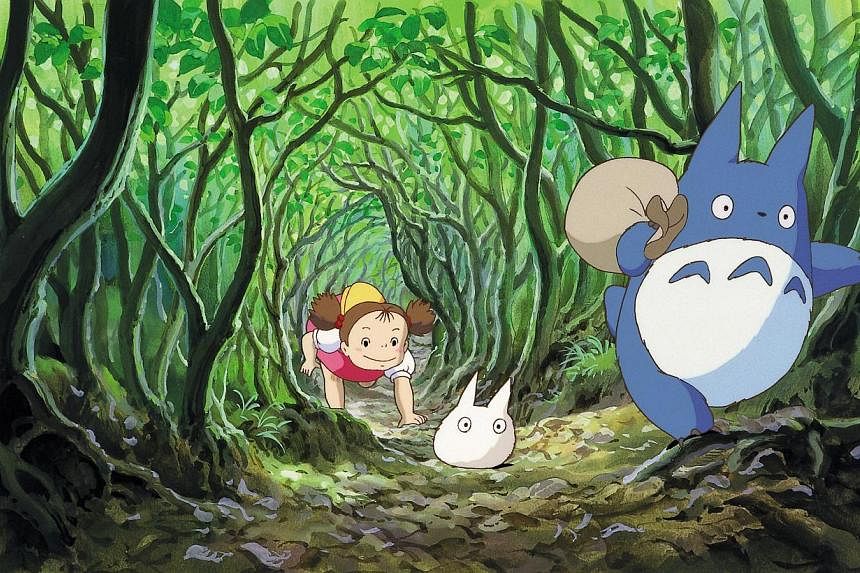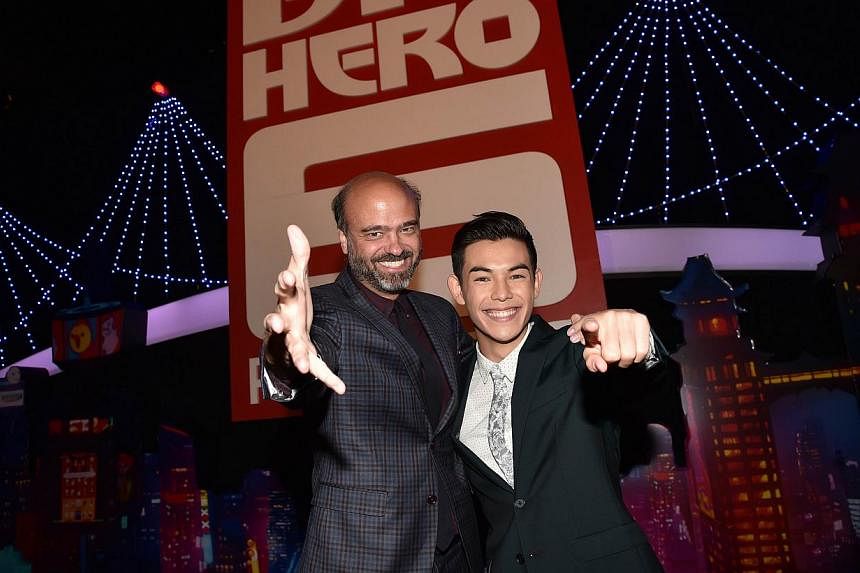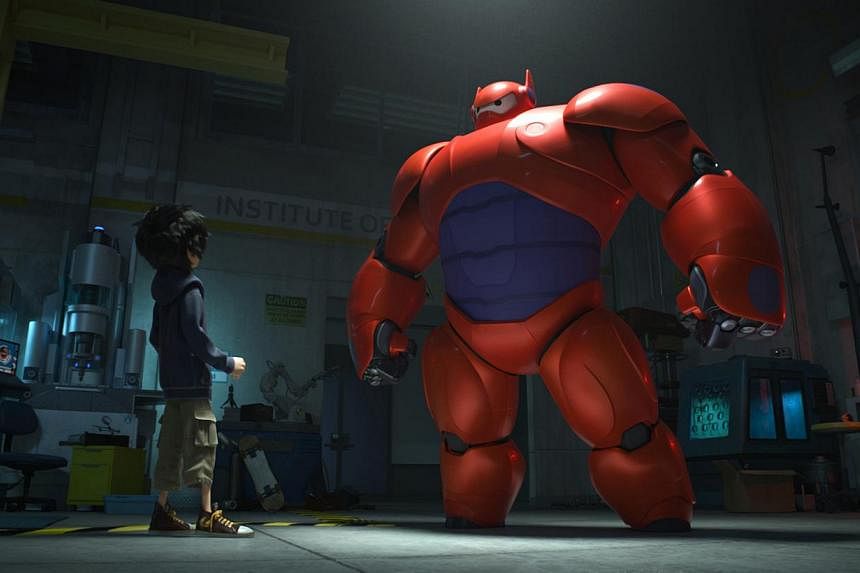The new Disney animated feature Big Hero 6 opened at No. 1 at the American box office last weekend - director Christopher Nolan must be feeling a twinge over how a movie about a boy and his roly-poly robot has nudged his brainy space thriller Interstellar into second place.
That a Nolan blockbuster has opened in second place for the first time must sting, with the added insult that Disney's new film is nothing like its last hit, Frozen (2013).
Here, in contrast to Frozen's Disney princesses, soaring songs and enchanted world, Big Hero 6 takes risks with a biracial nerd protagonist, no songs and a story that luxuriates in moments of stillness.
Co-directors Chris Williams and Don Hall attribute that sense of unrushed storytelling to the influence of Japanese animation.
There is a long pause when the boy-scientist Hiro Hamada (voiced by Ryan Potter) and his robot creation Baymax sit wordlessly atop a wind turbine floating high above the clouds - such moments are rare in American animation, which packs every frame with action or dialogue.
Williams, speaking to Life! in Tokyo, says that was a nod to the "sweetness and sentimentality found in great anime films".
The two directors found inspiration in My Neighbour Totoro (1988), directed by the legendary Hayao Miyazaki, and which contained several wordless yet emotionally charged scenes.
Williams and Hall say Baymax's innocence and gentleness owes something to the large furry creature Totoro from the anime.
Big Hero 6 was given its world premiere in Tokyo last month, where it was the opening film at the Tokyo International Film Festival. It opens in Singapore tomorrow.
According to producer Roy Conli, in a movie world awash in robots, the team also turned eastwards to find something different to root the character of Baymax - whom he calls a "huggable robot".
"In Western culture, movie robots are the Terminator, Robocop - they are violent creatures," he says. "But in the East, robots are helpful. They are your friends."
The influence of anime does not end there, say Williams and Hall. In the action sequences, such as when Baymax flies or fights, they drew on Miyazaki's Laputa: Castle In The Sky (1986) and Katsuhiro Otomo's sci-fi epic Akira (1988).
Hall as a boy had a Brave Raideen action figure. The co-writer of the Big Hero 6 screenplay did not know the toy was based on a Japanese sci-fi anime television show, but it was one of his favourites. The figure had a detachable rocket fist.
"When we were designing Baymax's mech suit, the idea that he would have a rocket fist was essential - it touched on something I had as a kid.
"The rocket fist becomes a symbol - it's a symbol of vengeance and violence, but later it turns into a symbol of healing and hope," says Hall.
The film draws on a short-lived late-1990s Marvel comic series of the same name.
Disney paid US$4.6 billion in 2009 to buy Marvel Entertainment and that entitled it to use any Marvel story or character (with exceptions, such as Spider-Man or The Avengers, which are licensed to other studios).
There was no pressure from the studio for this, the first Disney project to draw on a Marvel idea, to be a slick Marvel superhero blockbuster, say the pair.
The project's executive producer John Lasseter, chief creative officer at Disney and Pixar Animation (and director-writer of Toy Story, 1995; and A Bug's Life, 1998, for Pixar), reassured them that the story and characters, not the Marvel template, were paramount.
Hall adds that if there was any pressure, it came from being given the Disney brand, a label that is home to beloved characters such as Dumbo and Bambi.
Says Williams: "We want people to feel that when they come to see a Disney animated movie in any genre, they are going to have a great experience - that's something that is always present."
Hall and the team found the Big Hero 6 property and made significant changes - in the comic, there is no Baymax like the one seen in the movie, for example.
He was drawn to the strong American-Japanese cultural mix of the series and that is retained in the world of the movie. The result is the city of San Fransokyo, or a future San Francisco that has taken on elements of Tokyo and in which the story is set.
"When we started world-building, we used San Francisco because it has so many landmarks - the cable cars, the Golden Gate bridge. We thought it would be cool and interesting to blend it with a Japanese aesthetic," says Hall.
And not just in the architectural details.
In a creative decision that marks a milestone for Disney, the heroic crew in Big Hero 6 are drawn from various ethnic groups, with different cultural practices.
Shinto rituals are glimpsed at a funeral and the protagonist Hiro, while having a Japanese name, is an all-American kid.
Hall and Williams say the character has a Japanese father and a Caucasian mother, though that is never mentioned in the film.
Hall says "he is a mash-up, just as our world of San Fransokyo is a mash-up".
The racial make-up of the crew that forms around Hiro also is a microcosm of San Francisco's varied population.
Adds Williams: "It's only natural that we had a multicultural cast, so we wanted to reflect that. And we wanted it to look like it was no big deal."
Big Hero 6 opens in Singapore tomorrow.




